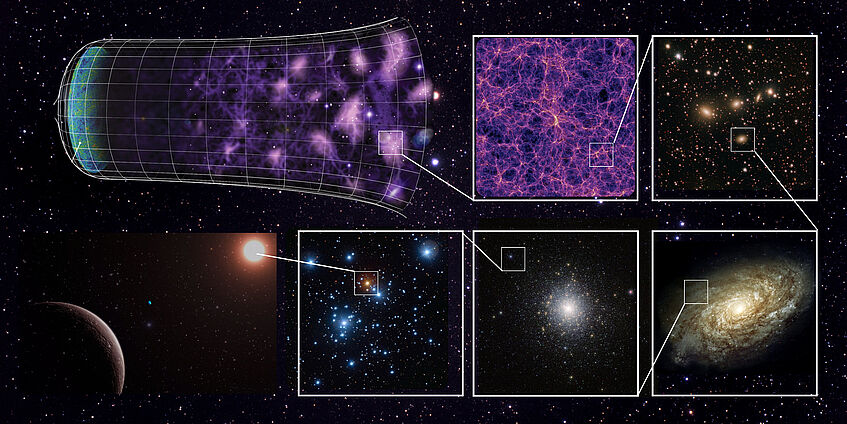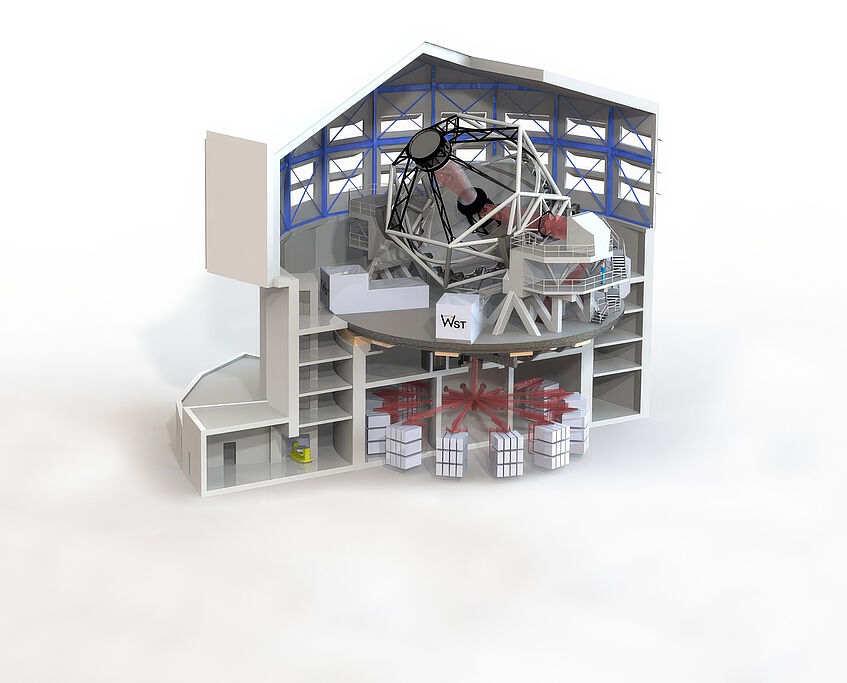The European Union funds the Conceptual Study of the Wide-Field Spectroscopic Telescope
November 25, 2024 – On November 4, 2024, a contract was signed to fund the conceptual study of a new telescope, the Wide-Field Spectroscopic Telescope (WST), which could become operational in Chile after 2040. The innovative WST project aims to build a telescope dedicated entirely to wide-field spectroscopic surveys in the optical band, covering all types of celestial objects, from distant galaxies to asteroids and comets within our Solar System. The project was selected as part of the European Union’s Horizon Europe Framework Program through a competitive call for research infrastructures, and the international consortium leading it was awarded three million euros to fund a detailed conceptual study over the next three years, from 2025 to 2027.
The international consortium that received the funding includes 19 research institutions, with a science team of over 600 members from 32 countries distributed in all five continents. The project is led by Roland Bacon of Centre National de la Recherche Scientifique (CNRS, France) and Sofia Randich of National Institute for Astrophysics (INAF, Italy), with the support of the project office and a Steering Committee with members from the involved institutes.
WST, a telescope with a 10-metre class primary mirror exclusively dedicated to spectroscopic observations, promises to fulfil a critical need identified by the international scientific community in numerous strategic plans outlining the critical priorities for astrophysical research in the coming decade, including the European Astronet Roadmap 2023. Sofia Randich explains: “The Wide Field Spectroscopic Telescope will produce cutting-edge, transformative science and will allow researchers to tackle key scientific questions in areas such as cosmology; the formation, evolution, and chemical enrichment of galaxies (including the Milky Way); the origin of stars and planets; astrophysics of transient or time-variable events; and multi-messenger astrophysics.”
Despite ongoing construction of ground-based telescopes with 30-40 meter mirrors, there are no existing or planned facilities with WST unique characteristics: namely, a 12-metre primary mirror diameter, simultaneous operations of a multi-object spectrograph capable of observing over a large field of view (3 square degrees, approximately the area of 12 full Moons) with high "multiplex" capabilities (20,000 fibres), and a panoramic integral field spectrograph, covering 9 square arc minutes. “These specifications are highly ambitious and position the WST project above existing and planned ground-based observational infrastructures,” says Roland Bacon.
The concept study funded by Horizon Europe will address all relevant aspects needed to form a comprehensive picture: the telescope design and instruments, the selection of the site in Chile where the telescope could be located, further development of scientific cases, the preparation of a survey plan, as well as an operational model for the facility and plans for innovative data reduction and analysis, to maximize scientific return.
The Department of Astrophysics of the University of Vienna is one of the consortium partners: “If selected for construction, this new astronomical facility will have a strong impact on the future of astrophysical research, because it will enable cutting-edge science for an anticipated life time of at least 20 years”, says Bodo Ziegler, member of the Steering Committee. Ziegler is also leading the work packages conducted in Vienna, which are devoted to investigate the environmental impact of this new facility. Indeed, this will be one of the criteria guiding technological choices and trade-offs, and solutions will be developed to mitigate significant sources of carbon dioxide emissions. The projected environmental impact for the construction and operational phases of the WST will be documented in detail at the end of the study.
The European Southern Observatory (ESO) will soon open a call for ideas to evaluate the most innovative and science-promising projects for investment after the Extremely Large Telescope is completed. The consortium aims to propose the WST for this: if approved, it would become the next major ESO facility, with the potential to address groundbreaking astrophysical questions in the 2040s.
Visit the WST website: https://www.wstelescope.com/
WST Press Release: https://www.wstelescope.com/press-releases
WST contacts:
Principal Investigator: Roland Bacon | roland.bacon@univ-lyon1.fr
Communication Office: Rossella Spiga | rossella.spiga@inaf.it
WST will address many open questions in astrophysics over an extensive range of physical scales: from the formation of the large-scale structures in the early universe, to the interplay of galaxies in the cosmic web, to the formation of our own Galaxy, to the evolution of stars and the formation of planets around them. Credit: WST/V.Springel,Max-Planck-Institut für Astrophysik/ESO


